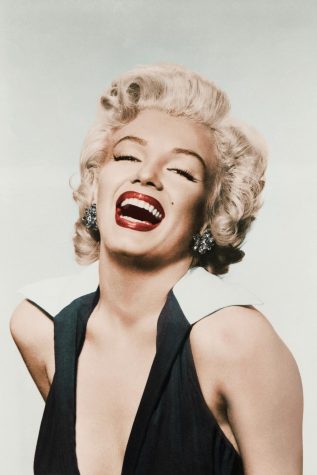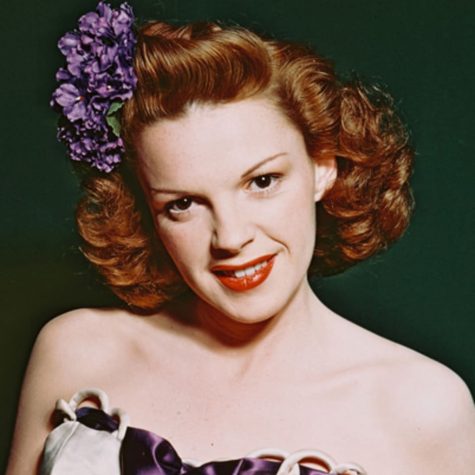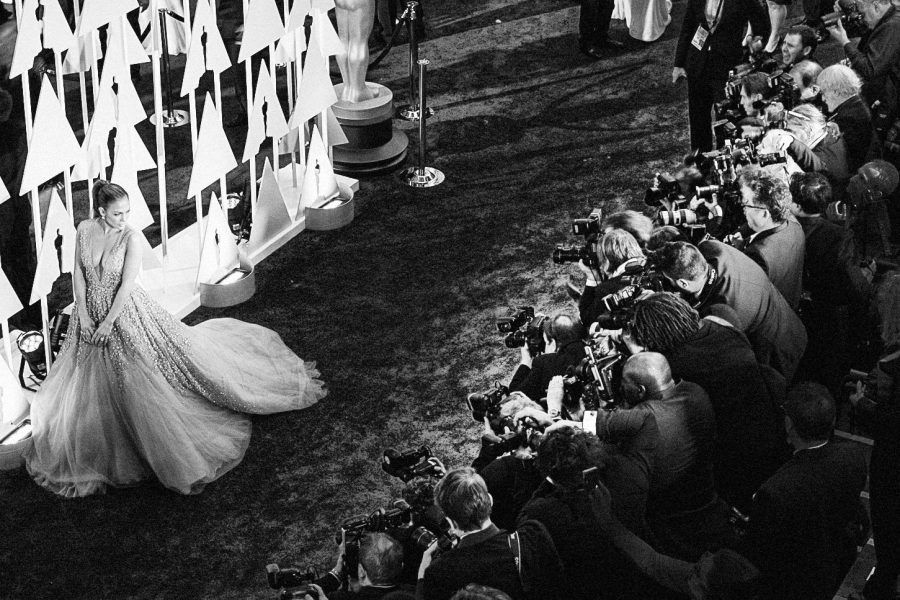An Unsuspected Killer: Fame
March 14, 2022
The lives of the rich and famous have always had great influence in America. If you go back to America’s foundation in the 18th century, you’d find great influential writers, like Thomas Paine and Alexander Hamilton, who had such artful ways of communicating their ideas and would inspire a group of colonies to unite as one against the most powerful empire in the world. Jump forward to today and you’d see the idea of celebrityhood has grown exponentially. In the age of Hollywood and social media, people have been able to hold such strong influences on the average person in ways they have never had before. Americans now look up to the lives of celebrities to find inspiration and guidance. We see celebrities as the most fashionable, successful, and vibrant people in the world and we aspire to be like them. We want to wear the same brands as our favorite influencers, drive the same cars they do, use the same lingo, and the list goes on and on. But have we ever stopped to think that fame may not be as glamorous as we’d like it to be? In fact, fame can destroy a life just as easily as it can build one. Three of the most prevalent pieces of evidence to this can be found in the lives of Marilyn Monroe, Judy Garland, and Amy Winehouse.
Marilyn Monroe (1926-1962)

When people think of the quintessential definition of Hollywood glamor, they most likely first think of Marilyn Monroe herself. The “blonde bombshell” starred in over 40 movies and is viewed as one of the most successful actresses of her time. Monroe was not only known for her performances on screen, but also as a key figure in the sexual revolution in her time. Much of the 20th century was a time where women were not supposed to even be slightly promiscuous. Garments were not meant to show too much leg and most definitely were not supposed to be featuring a woman’s stomach, cleavage, and sometimes even shoulders. Marilyn Monroe did this anyway and in doing so became a great feminist figure in American history, knowingly or not. Monroe would see great success in her career and would come to be involved with some of the most influential men in American history, including President John F. Kennedy.
However, not everything was so glamorous in the life of Marilyn Monroe. While she still had her struggles in life before fame (such as being wedded at the age of 16 and never getting to know her father), Marilyn had to face a whole new set of challenges when brought into the spotlight. Monroe was confined to always playing the role of the dumb blonde damsel in distress; having to always portray this identity likely had negative effects on the actress’ self-perception and made her feel like she was only good to be the the young dumb blonde and nothing more. She faced numerous other struggles with her state of celebrity. The public and media was always curious about the life of Marilyn Monroe and such open and shameless speculations likely hurt Marilyn greatly. In 1953, nude photos of Marilyn would appear in Playboy without her consent. As exuberant and glorious as her public life was, it was also a life that was tortured by fame. By the 1950’s Monroe was depressed, anxious, and ridden with anxiety. The actress would turn to alcohol and prescription drugs to cope to the point where she could no longer make movies. In 1962, Monroe was found dead in her home with an empty bottle of prescription pills found right beside her – a means of death that is not so glamorous and is most definitely not what one envisions for their final moments to consist of.
Judy Garland (1926-1962)

Judy Garland, most known for her portrayal of Dorothy Gale in the classic movie The Wizard of Oz, was yet another highly successful entertainer who would fall victim to her celebrityhood. Judy was brought to fame at the young age of 13 and would land her most prominent role in film (Dorothy Gale) at the age of 16. She entered fame without really knowing what it entailed; most adults don’t know how fame will truly change their lives, there is no way that Judy could predict how it would change hers at the very young and unaware age of 13. Judy was featured in at least 31 films and released 7 studio albums with an additional 6 live recorded albums. As famous and as admired as Judy was, she was most beloved by the gay community of her time; the singer would be referred to things like “the Elvis of homosexuals” and a “gay icon”. The singer’s camp aesthetic and understanding of what it means to truly struggle resonated with the gay community of the time. When asked if she minded having such a large gay following the singer appeared to love the attention she got and claimed that, “I couldn’t care less. I sing to people!” Garland would always be admired by this demographic and set the stage for those who would follow in her footsteps, like Madonna in the 90s and Lady Gaga now.
Despite this deep admiration for Garland that she only found due to her fame, her celebrity status harmed her just as much as it had helped her. Due to the incredibly horrible working conditions on the set of The Wizard of Oz, Judy is now sometimes considered as the sacrificial lamb to the movie and its great success. Production had taped down Garland’s breasts and forced her to wear overly tight corsets to give the actress, of 16 years, a more pleasant figure. She also wore teeth caps and prosthetics on her nose to make her more ideal for the role visually. The horrors didn’t stop here. Garland had to take “upper” pills to wake each morning and “downer” pills to put her asleep each night. When filming the hit movie, Judy was given amphetamines to control her weight and boost her energy on camera. On top of this all, Garland was only allowed to consume chicken soup, black coffee, cigarettes, and diet pills. Judy would be slapped by directors and even molested by the actors who portrayed the munchkins, most of whom were around the age of 40 touching this 16 year old girl. This film caused Judy to become addicted to drugs at a very young age and would end up killing her in 1969 after an overdose.
Amy Winehouse (1983-2011)

Second only to Adele, Amy Winehouse is viewed as one of the most successful and famous British female singers in the world. Her two albums, Frank and Back to Black brought Amy Winehouse immense amounts of fame, more fame than she could handle. Amy would become beloved by Britain after Frank and admired globally after Back to Black which really launched the singer into fame. The singer won five Grammy awards in her lifetime and one in 2012 after her death for a duet she had done with Tony Bennett. Amy Winehouse, in a way, reinvented jazz in the modern era. Jazz has become less mainstream since its boom in the roaring twenties, but Amy tried to bring it back in a way that was true to her. The singer combined the genre with soul and R&B music to create art that was uniquely hers. Amy was beloved by her fans who stood by her no matter what and despite her struggles they always wanted the best for Amy and her career.
Even though she had so many incredible achievements and will forever be known as a musical genius, the singer faced many hardships in life which were only worsened by her state of fame. Despite being so famous and beloved, Amy still felt alone and unbearably so. She was surrounded by thousands of people at concerts and greatly admired, and yet she didn’t feel connected to people. She didn’t have the personal relationships in life that she needed to be happy and what relationships she did have tended to be quite abusive, most especially with a man named Blake Fielder-Civil. The two would be engaged in an on-off relationship for years and despite their claims of true love, they would both be extremely abusive to one another. There were constant claims of the couple’s physical altercations with each other going both ways and the two were constantly seen bloodied up and with marks or bruises along their body. The two both practiced self-harm, with Amy going as far as to carve “I Love Blake” into her stomach in front of a reporter. Blake was also the one to introduce Amy to hardcore drugs and the singer would struggle with addiction to them and alcoholism up until her death in 2011. Amy tried to recover, but couldn’t. She was found dead in her home at the young age of 27 after trying to go cold turkey from drugs and alcohol without being under the care of medical professionals. Fame quite literally tortured Amy before her death and she made it very clear that she didn’t want it anymore. A bodyguard to Amy claims that her very last words to him were “if I could I would give it back just to walk down the street with no hassle.” Amy wanted to be a mother more than anything else, including being famous, but she would never get the chance.
As you can see, fame isn’t nearly as glamorous as we’d like to imagine; if it were so many of these talented individuals wouldn’t have their lives end in such tragic harmful ways. In the case of each of these three artistic women, fame led to addictions which ultimately led to death. While they did indeed enjoy the benefits of fame, they also fell victim to the numerous downsides to it. Fame still tortures artists today: Lady Gaga has stated that her fame and lack of privacy has caused her to have suicidal feelings, Britney Spears struggled with combating the paparazzi and maintaining a healthy mental status which ultimately put her under an unjust conservatorship, Kanye West is now likely going through serious mental distress and it is all occurring under a spotlight. Fame isn’t just what we see on social media or an episode of Keeping Up with the Kardashians, it also brings immense amounts of struggle and hardship that most people don’t understand the true extent of.


